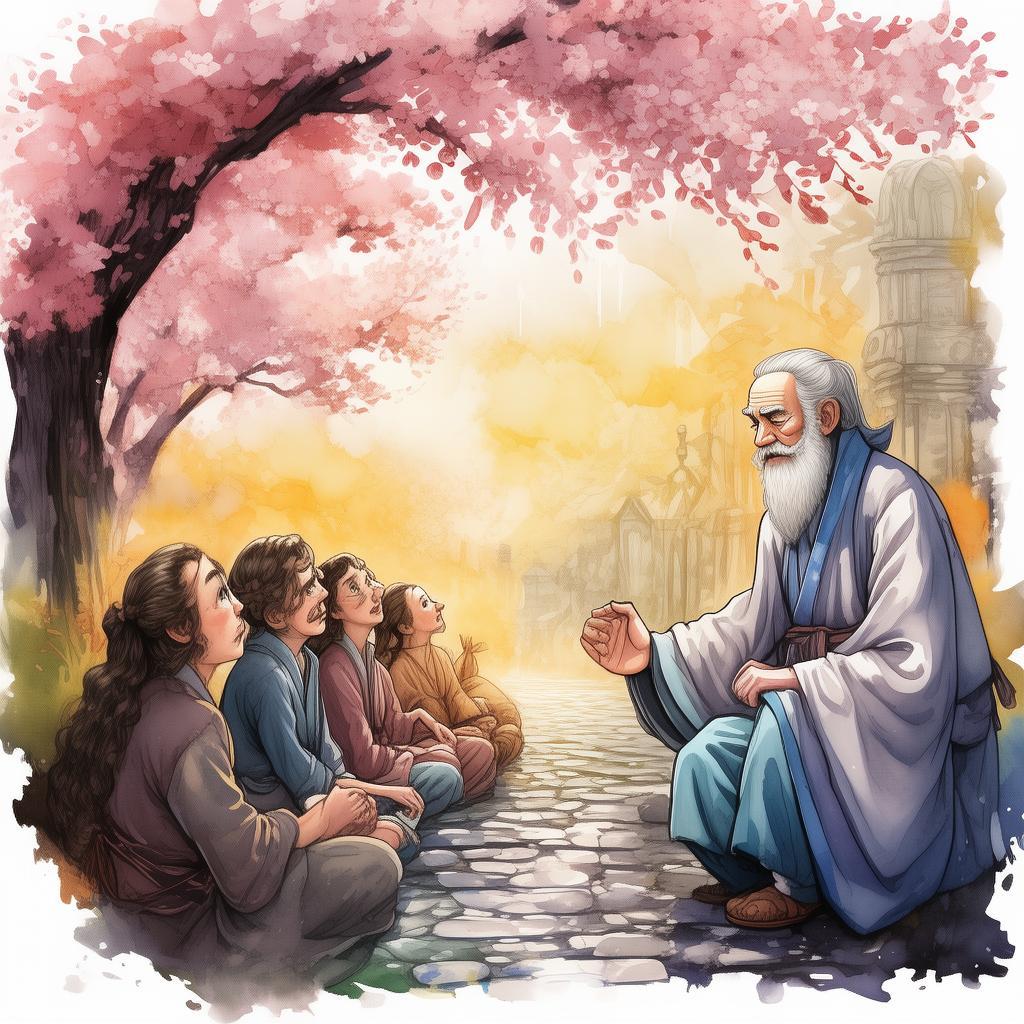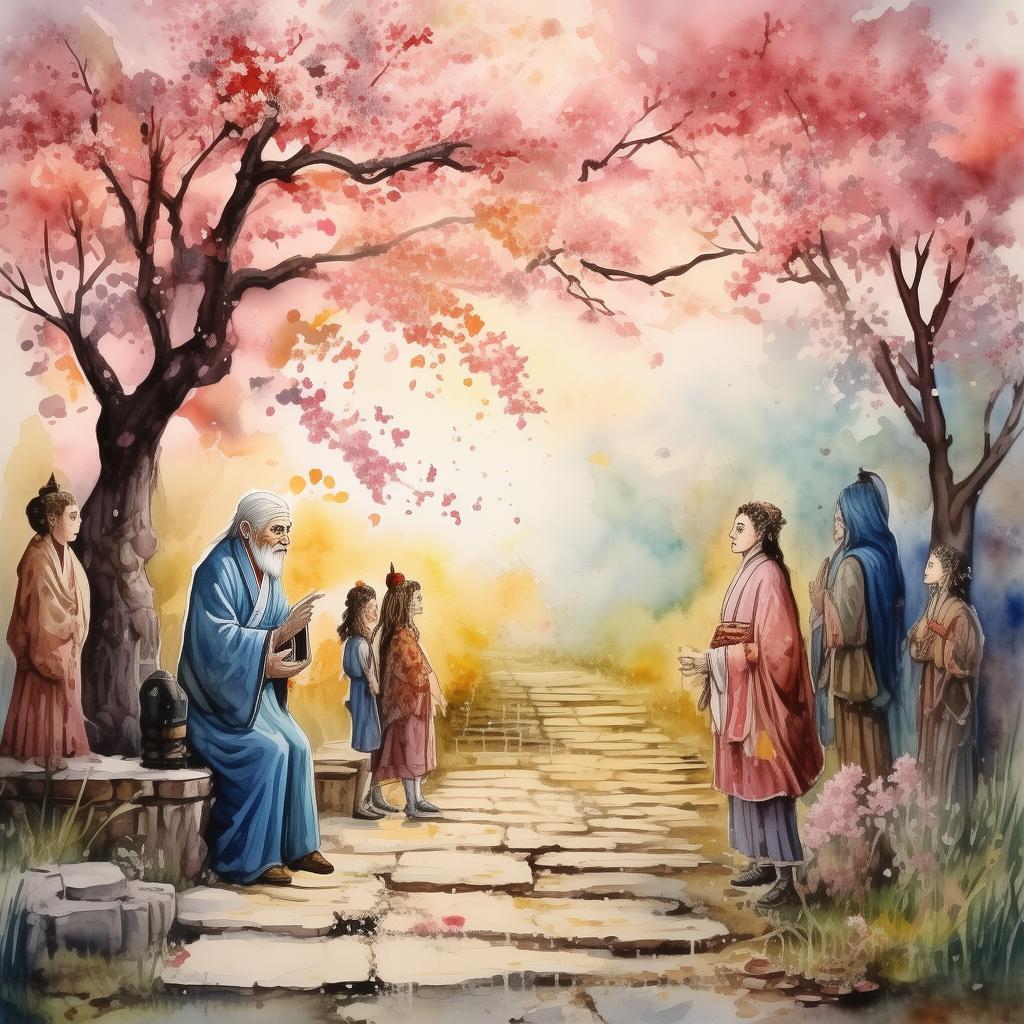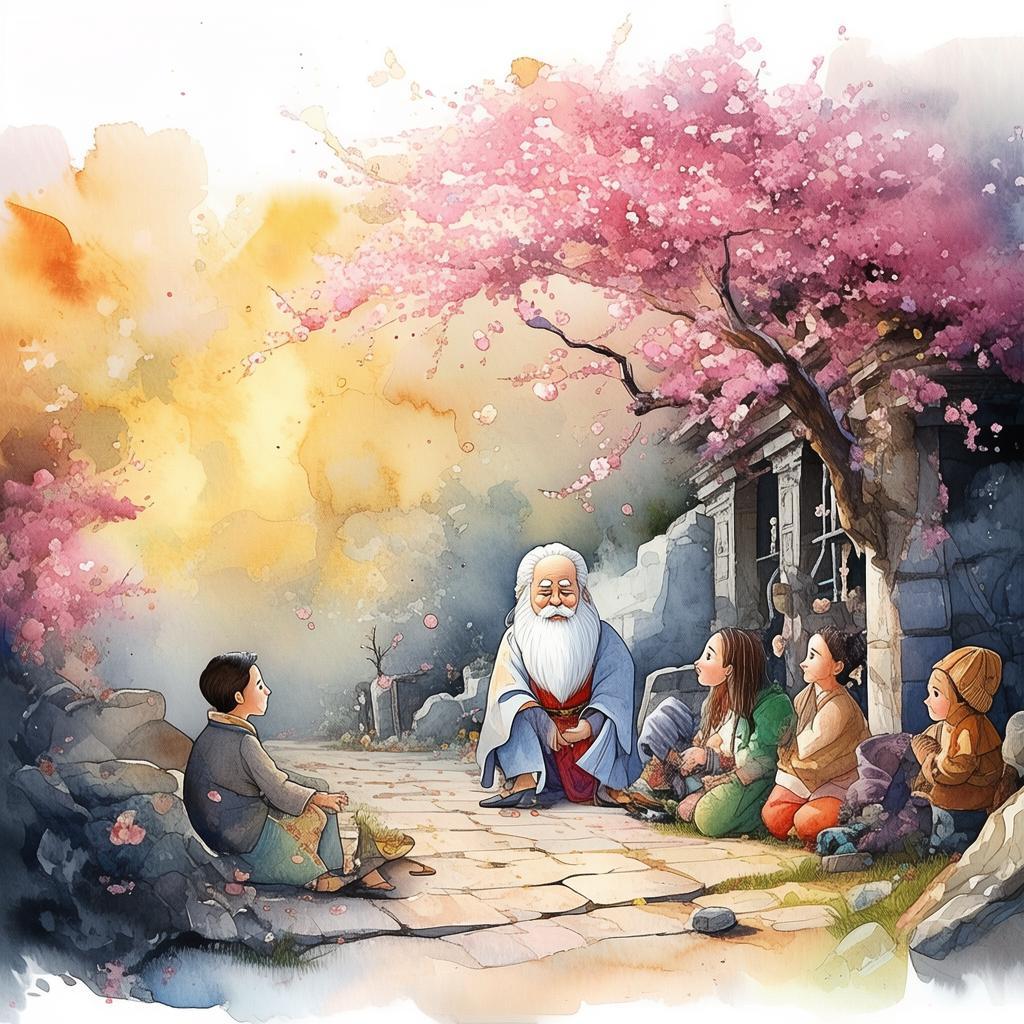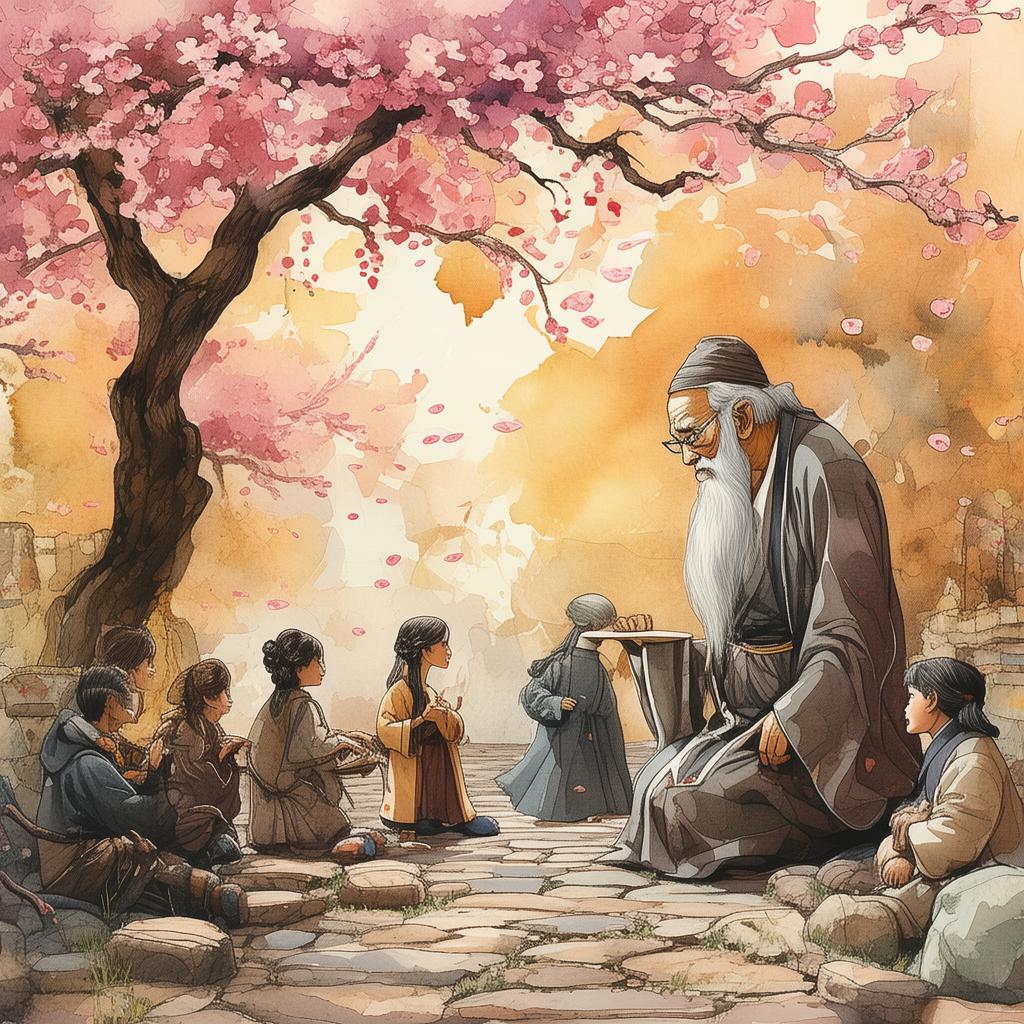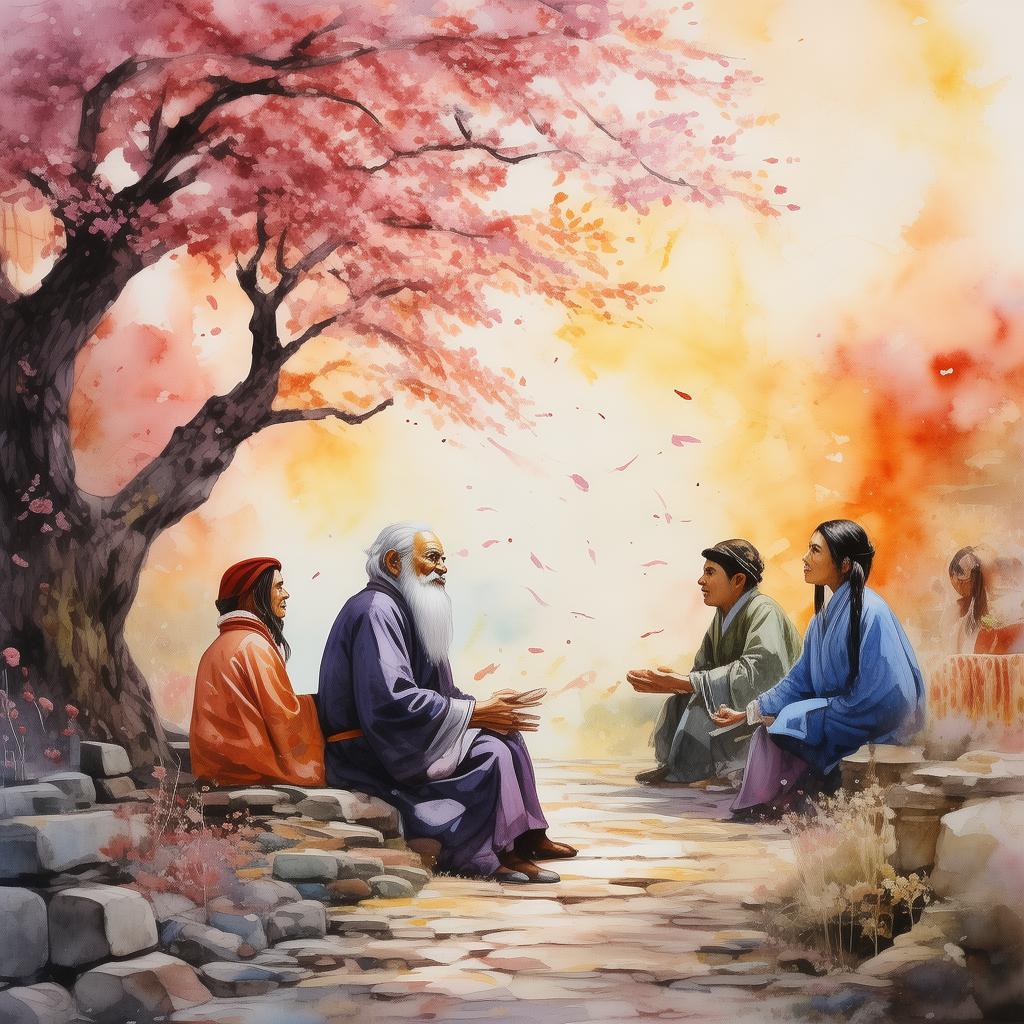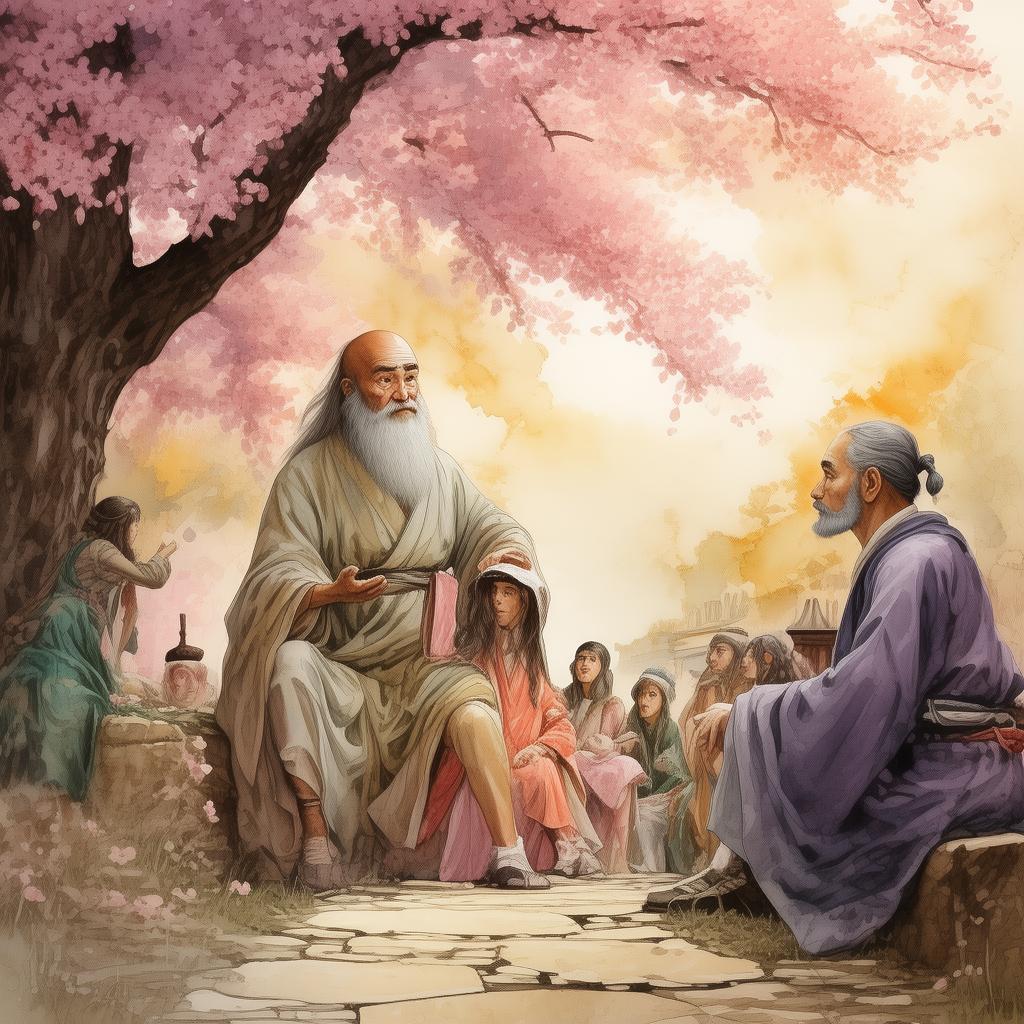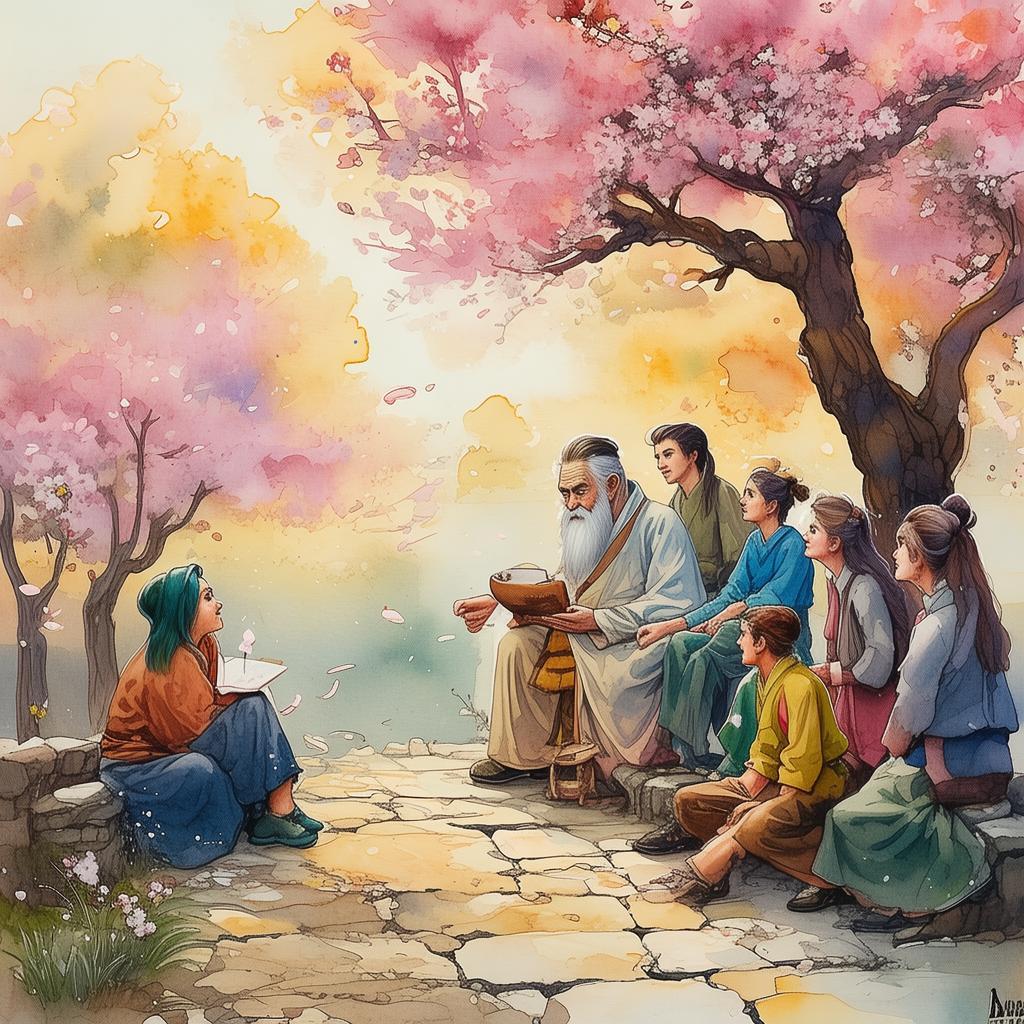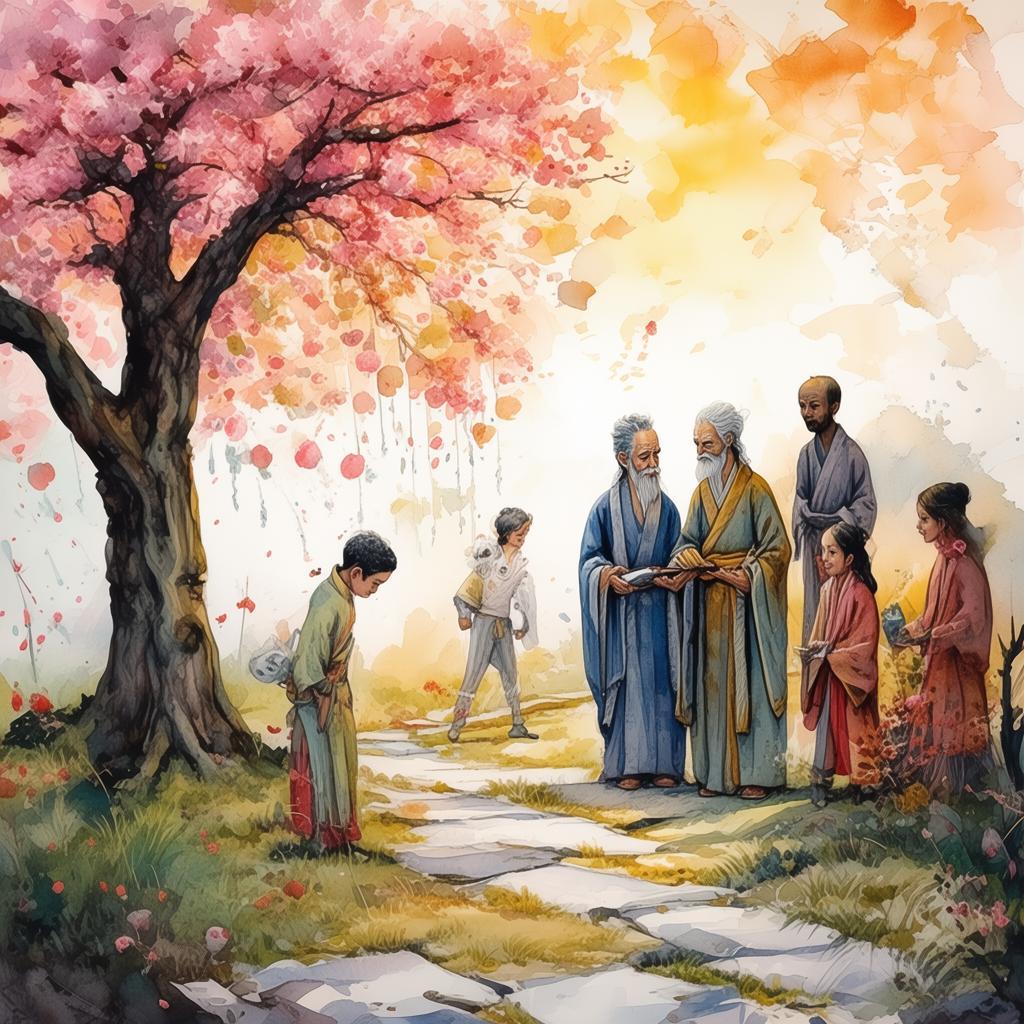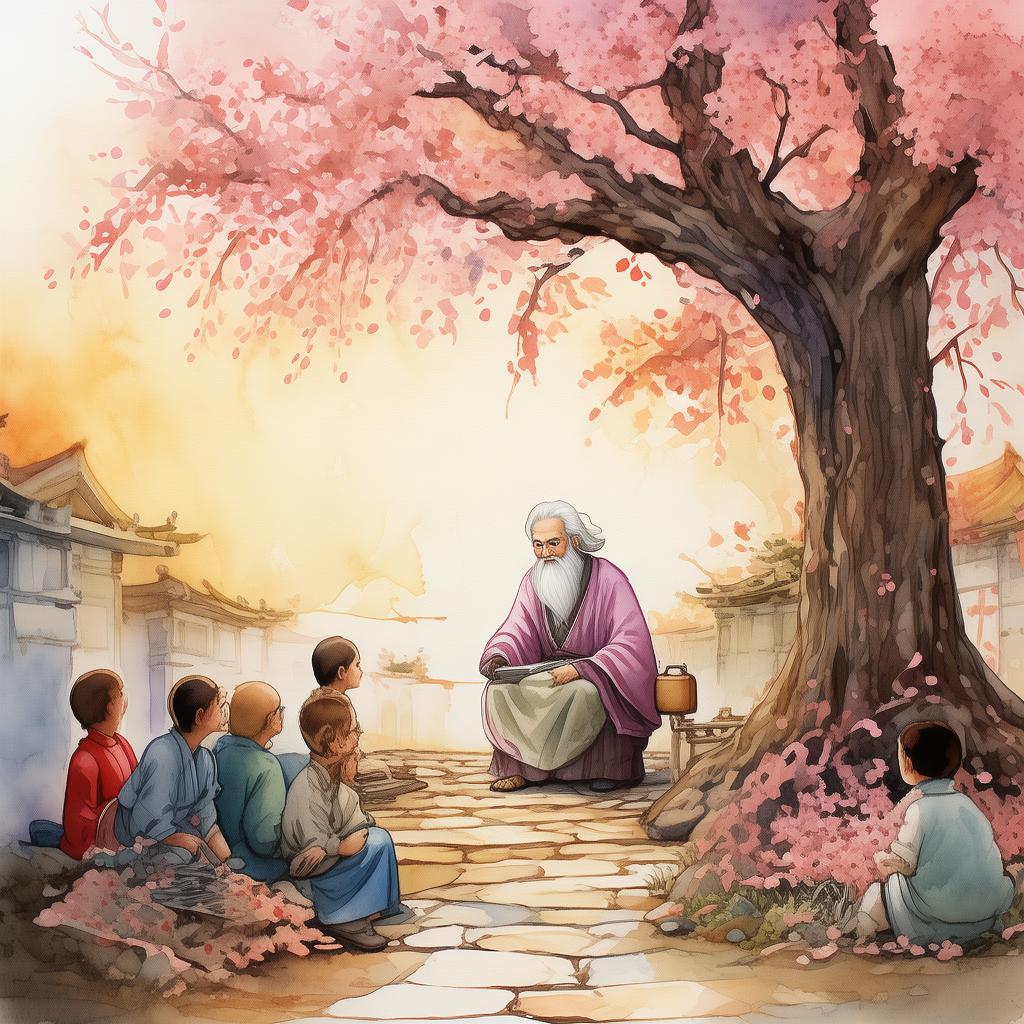Whispers of the Ancient Mirror
In the heart of the ancient kingdom of Jing, nestled among the towering mountains and lush forests, there lay a village named Lingshui. The villagers were known for their wisdom and adherence to age-old proverbs, which they believed were the guiding light of their lives. Among them was a young scholar named Ming, whose passion for knowledge was unmatched. Ming spent his days poring over ancient texts, seeking to understand the mysteries of the world.
One day, as Ming was walking through the village, he stumbled upon an old, dusty mirror in the attic of the temple. The mirror was unlike any he had ever seen, with intricate carvings and symbols that seemed to pulse with an ancient energy. Intrigued, Ming brought the mirror to his home, where he spent countless hours studying its enigmatic patterns.
As he examined the mirror, Ming noticed that the symbols seemed to change with each passing moment, revealing snippets of wisdom from the past. The first symbol to appear was a simple one, depicting a tree with its roots deep in the earth. Ming recognized it as the proverb, "The roots of a tree are deep in the earth, and its branches reach to the sky." He smiled, knowing that this meant to stay grounded and remember one's origins.
The next symbol was more complex, showing a person looking into a mirror, which reflected their own face. Ming recognized this as the proverb, "A mirror to oneself is the best guide." He realized that self-reflection was key to understanding oneself and making wise decisions.
As the days passed, Ming continued to uncover more proverbs through the mirror. Each one seemed to offer a deeper understanding of the world and the people around him. He began to see connections between the proverbs and the challenges his village faced. The villagers were facing drought, and Ming knew that they needed to find a solution.
One evening, as Ming was studying the mirror, a new symbol appeared. It was a person standing at the edge of a cliff, looking back at their village. Ming understood this as the proverb, "Look back to see where you came from, but look forward to where you are going." He realized that the villagers needed to look to their traditions and wisdom for guidance, but also to plan for the future.
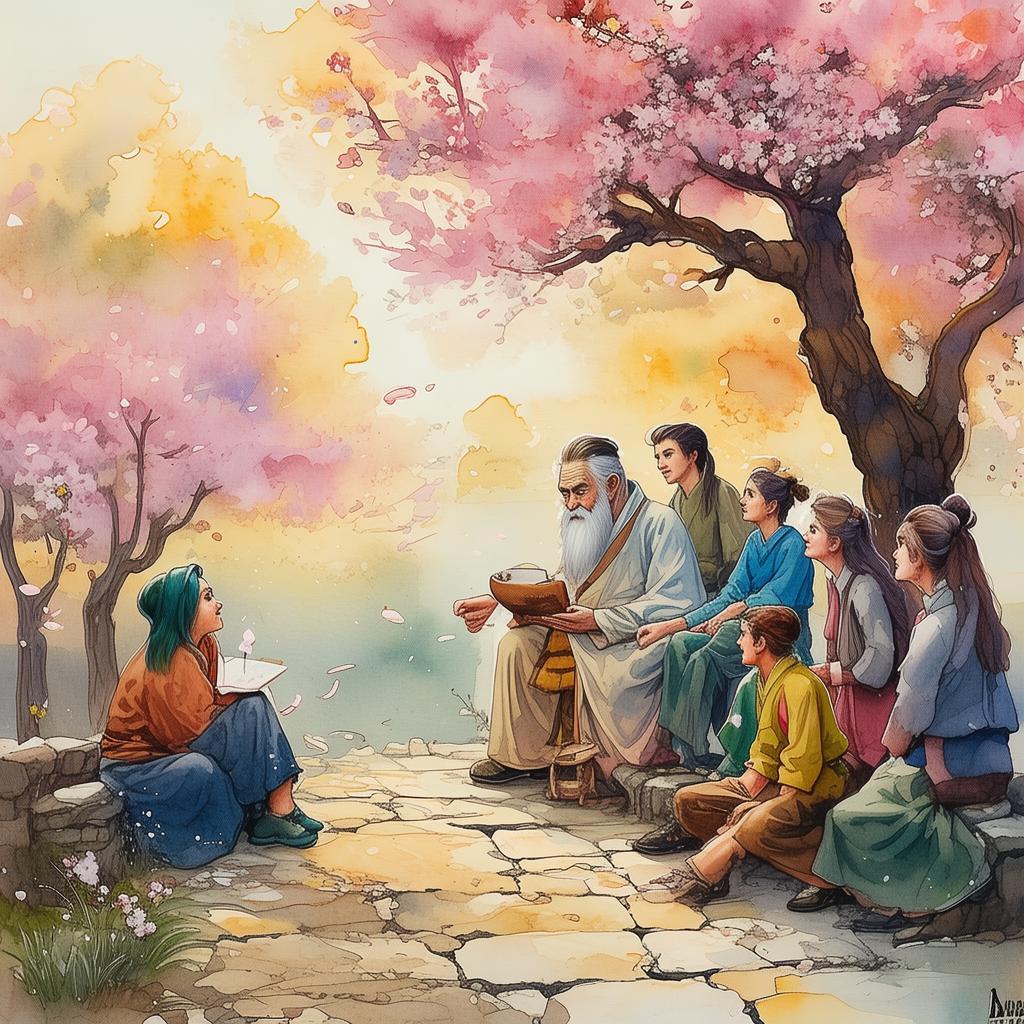
Determined to help his village, Ming gathered the elders and shared his findings. They discussed the proverbs and how they could apply them to their situation. The elders agreed that they needed to dig deeper wells and plant more drought-resistant crops, while also seeking new ways to store water and preserve food.
As the villagers worked together, the drought began to lift, and their crops flourished. Ming's village was saved, and the villagers realized the power of their ancient proverbs. They began to pass down the wisdom to the next generation, ensuring that the traditions of their ancestors would never be forgotten.
Ming, however, knew that the mirror held even more secrets. He decided to continue his studies, hoping to uncover more proverbs that could guide his village and the world. As he held the ancient mirror, he felt a deep connection to the past, understanding that the wisdom of the ages was a beacon of hope for the future.
The village of Lingshui thrived, and Ming's name became synonymous with wisdom. He became a revered figure, not just for his knowledge, but for his ability to use the past to guide the future. And so, the ancient mirror remained a symbol of the village's enduring legacy, a testament to the power of wisdom and the enduring truth of the proverbs it held.
✨ Original Statement ✨
All articles published on this website (including but not limited to text, images, videos, and other content) are original or authorized for reposting and are protected by relevant laws. Without the explicit written permission of this website, no individual or organization may copy, modify, repost, or use the content for commercial purposes.
If you need to quote or cooperate, please contact this site for authorization. We reserve the right to pursue legal responsibility for any unauthorized use.
Hereby declared.

